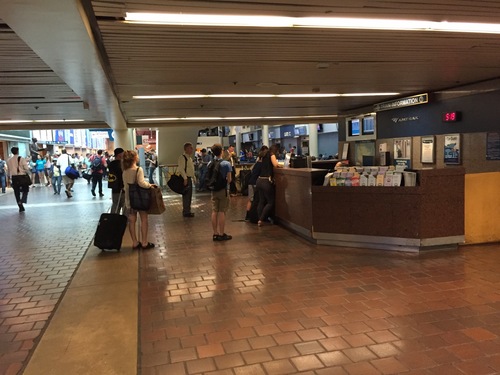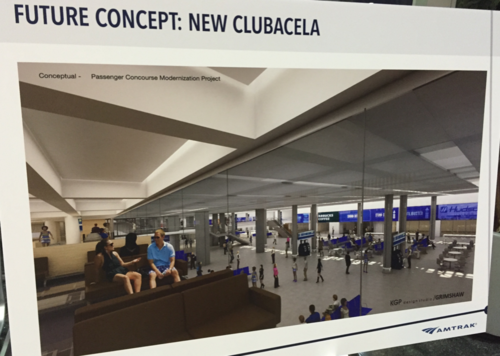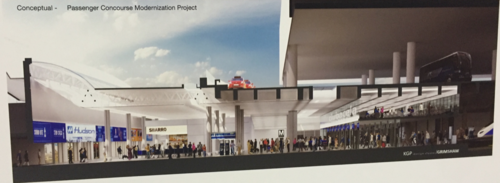Union Station’s concourse could get a big facelift
Union Station’s concourse, which serves Amtrak, MARC, and VRE passengers, can get very crowded. Plans to renovate the concourse aim to use the space more efficiently, providing larger waiting areas and giving riders much more room to move around.

Union Station’s concourse could look like this. All photos by the author, all renderings by KGP design studio/Grimshaw unless otherwise noted.
Union Station will soon begin construction on the “Passenger Concourse Modernization Project,” an effort to relieve crowding and give customers a better experience in Claytor Concourse (the concourse’s official name). The renovations are part of the station’s larger 2nd Century Plan which aims to double train and passenger capacities over the next twenty years.
As it exists now, the concourse is a crowded space with waiting areas inadequately sized for the explosive growth that intercity and commuter rail ridership has seen in the last few years, reflecting the fact that the terminal is operating far beyond it’s capacity and outgrowing the major renovations that were completed in 1988.
The Concourse Modernization Project will make way for expanded passenger waiting areas by eliminating many structures that currently stand between the station concourse and the tracks, such as the Amtrak information desk and the Starlight Room (the MARC waiting room that encompasses Gates B, C, and D).

The Amtrak desk invites people to stand in line in the same place where others need to walk through the concourse.
Club Acela, a waiting room for Amtrak’s first class passengers and premium rewards club members, will be relocated to a new, glass-enclosed second-floor location above the new waiting areas, and the women’s bathroom at Gate G will be moved to the east end of the concourse. The men’s bathroom and the retail space currently occupied by Sbarro and McDonalds will remain, according to a proposed concourse floor plan.
These changes will expand the floor space of the concourse by 20,000 square feet, ensuring that passengers waiting to board their trains will no longer come into conflict with foot traffic moving through the station or frequenting the numerous shops located between the trains and the main hall. The new arrangement will eliminate the fences that currently corral passengers into waiting areas in front of each gate.
These separated waiting areas fill up quickly once a train departure gate is announced, and boarding lines often spill over into the constrained walkway in front of the concourse shops. Of course, this problem may still persist if, after the renovations are complete, Amtrak retains its current inefficient boarding procedures— right now, instead of boarding by track number and allowing passengers to wait on the train platforms, the “gate” process at Union Station includes an unnecessary ticket-checking step before passengers are allowed to board their train, causing long lines to form in the crowded concourse area.
Amtrak has emphasized Union Station’s status as a major multimodal hub when discussing the planned renovations. The adjacent Metro station serves over 30,000 passengers a day, making it WMATA’s busiest station. Long-term WMATA plans include relocating the station’s First Street NE entrance and adding extra escalators and elevators to the passenger concourse.
Union Station also ranks highly in intercity and commuter rail passenger numbers: the station annually serves 1 million VRE customers (the third-busiest in that system), 5 million Amtrak passengers (second in the nation), and 8.5 million MARC customers (the busiest in that system). Amtrak claims that 75% of Capitol Hill employees pass through the station each day. A renovation of Claytor Concourse will be enormously beneficial to the tens of thousands of passengers who pass through the station daily.
Preliminary construction and relocation work for the project is expected to start before the end of this year, while full construction will begin in Winter 2017/2018. Amtrak expects the work to be completed in 2020.
What do you think of the Passenger Concourse Modernization Project? Do you think it improve your experience using Amtrak, MARC, and VRE?



